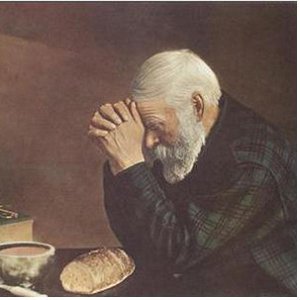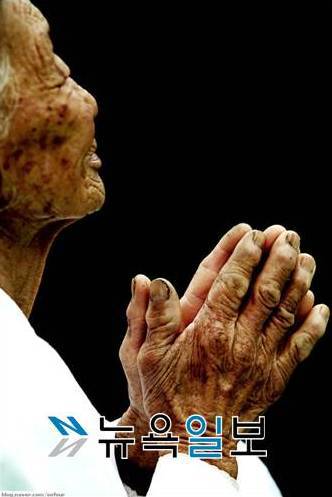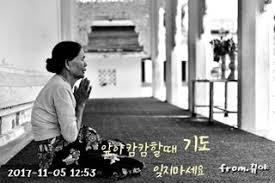Can Mennonite Voluntary Service be saved?
In 2009 when I graduated from college, I chose to go into Mennonite Voluntary Service (MVS). I made the choice independently, only to discover that many of my friends were also choosing a year of service in cities across the country. The program was expanding rapidly. It added two units in 2009-2010, and for some time that spring, had a waitlist of young graduates eager to serve.
In 2015-2016, MVS closed half its units due to declining participation. In spite of downsizing, the program is struggling. This year, after hosting just two participants in a unit designed for eight, one congregation in a popular city is debating a “sabbatical year” in 2018-2019.
What happened? And is there any hope of saving it? This is my evaluation as a pastor, participant and general observer of dying religious institutions.
A (very) brief history
Mennonite Voluntary Service began in 1944 as a response to government-mandated alternative military service. The Peace Problems Committee (a committee I believe should be revived if for no other reasons than its name) outlined a program for young conscientious objectors facilitated by the church instead of the government.
For generations, young adults volunteered for one or two years post-college. Many Mennonite Church USA congregations began in the 1950s and 1960s out of the voluntary service units, including the congregation where I grew up. In this way, the service programs became a catalyst for the Mennonite church’s urban shift.
In recent years, MVS has been an entry point to young adults looking to move to a city for the first time or seeking a career hold in a new field. MVS maintained a high rate of program alumni being hired into full-time positions, and many young people stayed in their newfound homes, attending their host congregations.
Challenges or deal-breakers?
Arguably, the writing was on the wall for MVS long before 2010-2011, but that year marked a dramatic change in the program. That year, the program lost its eligibility for AmeriCorps funding, a position that allowed young adults to earn $5,000 toward existing college debt or future education costs. Shortly after that, MVS began requesting that young adults raise money in order to participate. The program now asks participants to raise $3,000 from their home communities (but offers some assistance).
Even with AmeriCorps, MVS is far from lucrative — although daily expenses are covered and the program builds in funds for monthly special events, participants have $50 of spending money for each month. I was one of the participants who received AmeriCorps in the final funded year. Would I have done MVS if I had graduated in 2010? In my financial situation, it simply wouldn’t have been possible.
I don’t know why MVS wasn’t able to regain their AmeriCoprs status — but the odds for re-establishing it now are not good. Donald Trump’s 2018 budget proposes cutting AmeriCorps entirely.
Factors beyond our control?
Even without AmeriCorps worries, MVS faces an uphill climb. Three historical trends have been undercutting the program’s fundamental assumptions for at least a decade:
- MVS originally began as a service alternative for conscientious objectors. As the country slides into a state of endless war (noted by a 2015 MC USA resolution), and the likelihood of a draft dims, so does a likelihood of increased MVS participation.
- The rising cost of college makes a year of service increasingly untenable for young people saddled with debts the size of a home mortgage. And at the moment, that record-setting student debt is dovetailed by record-low unemployment. The average student graduated with $37,172 in loans in 2016, while in June of 2017 unemployment dipped to 4.3 percent, its lowest level in 16 years.
- In the 1950s and 1960s, MVS benefited not only from conscious objection but also urbanization. As farm jobs declined and Mennonites moved out of rural areas, MVS was a natural catalyst into cities. Today, many Mennonites are already growing up in urban areas and often leverage their college educations to access the communities they want to live in.
But broader trends are compounded by changes in the church. Mennonite Mission Network has been rattled by the fissure of MC USA. Some exiting congregations cut all ties, while others continue supporting MMN but with fundamentally different priorities than the MC USA congregations. There’s also the reality of the aging church — there are just fewer young adults than there were 40 years ago.
In addition, MVS has struggled with racial and gender disparities in the population of young adults who choose to serve. Non-white participants enroll at low rates and are more likely than white participants to drop out of the program midway through. (When I inquired about this as a participant, the best answer I received was, “It’s just hard for a volunteer to be the only non-white person in their house.”) MVS is also disproportionately female and has been for years. It’s possible that, as a program targeted at college graduates, it is echoing the national trend of women attending college at higher rates than men. It’s also true that, in general, most congregations have higher numbers of adult women participating than men.
Solutions and reinventions
Is there hope for MVS? Can the program be saved? Obviously, that’s a subjective question. MVS is on a downhill slide, largely for demographic reasons beyond their control.
The church can, and ought to, reinvent the program to match current realities. It may require a year or two hiatus or massive restructuring at MMN. But here are a few ideas:
Resolve the financial issues through modern funding strategies. This could happen with other Mennonite agencies, like MEDA, which has strategies for increasing quality-of-life and economic opportunity in developing countries. Or, MVS could look for grants through major funders like the Lily Foundation (which has supported religious — and particularly Mennonite — endeavors in the past). Or perhaps look to public-private partnerships. Charitable contributions are trending corporate, and as a denomination known for peacemaking and social justice, Mennonites could be an attractive partner.
Resolve diversity issues through targeted, supported houses. Would men be more likely to participate if there were male-only MVS houses? Would people of color have higher completion rates if they could support each other through the program? Possibly, but the houses would need more than peer support. Could a male house lead talk about the history of conscientious objection and help men understand their masculinity in relation to social services and volunteerism? Could MVS partner with a non-white or multi-ethnic congregation like Philadelphia Praise Center or Living Water Community Church to create or re-purpose new service houses?
Focus on affordable housing in expensive cities, but let creativity take precedent over service. MVS made a smart decision to keep open their houses in high-growth cities like New York, San Francisco and Seattle. But even those units are struggling. Could those houses let go of the volunteer structure, and instead offer faith-based community housing for young adults pursuing art, church planting or more broadly defined service? Why not convert those houses into semi-independent co-housing units designed to foster creative community? Sell other houses and offer each house a “creativity stipend” for collaborative endeavors like developing a new play, hosting an arts series or alternative spiritual communities.
Reverse the geographic trend. Three decades ago, MVS brought rural Mennonites to the cities. Why not work with new rural and urban programs like Hungry World Farm or Oakleaf Mennonite Farm to bring Mennonites back to rural roots? Many young Mennonites are looking for sustainable growing skills — MVS could be a catalyst to connect and nurture radical new farm initiatives.
Target young people without massive debt (is this still a thing?). Why not combine MVS with Service Adventure, another program for young adults? Or, make MVS into a vocational training site designed to help young people looking for a break before or in between college, like DOOR’s Dwell (which has also had recruitment struggles). College debt isn’t going away any time soon; MVS should shift to focus to those Anabaptists who opting out of college, and seek partnerships with organizations that offer technical skills.
Go secular or interfaith. I know it’s a radical solution for a Christian organization — but in an increasingly diverse world, why not hand over several houses to become independent non-profits for interfaith housing? Many congregations already have partnerships with local mosques and synagogues. Create a nine-month peacemaking curriculum and let young people experience interfaith peacebuilding opportunities.
Partner with neo-Anabaptists and church planting congregations. Variation on a theme, I know. But why not pool MVS resources to support thriving mega and near-mega churches? Brian McLaren has long been a Mennonite dialogue partner and pastored at Cedar Ridge Community Church outside of Washington DC. Why not explore partnership possibilities with the DC MVS house? Or, partner with missional Mennonite congregations like C3 or Amor Viviente and rent or loan them houses for young missionaries beginning church plants.
Rely on a global economic downturn to boost enrollment in two or three years. Why was enrollment so high in 2009-2010? It’s no coincidence that a massive financial crisis hit the country the fall before that service year. It’s always possible that President Trump’s economic policies will cause a surge of unemployment, and MVS can be there to pick up the pieces. I wouldn’t bank on that strategy, though.
You probably have your own ideas about how to reinvent MVS. If you do, share them, and let’s make some change.
Hillary Watson is a full-time Mennonite pastor in suburban Chicago. She blogs at Gathering the Stones, where this first appeared.










 :) She continues to drive. We both enjoy the Saturday evening Bible study that meets in our home.
:) She continues to drive. We both enjoy the Saturday evening Bible study that meets in our home.





